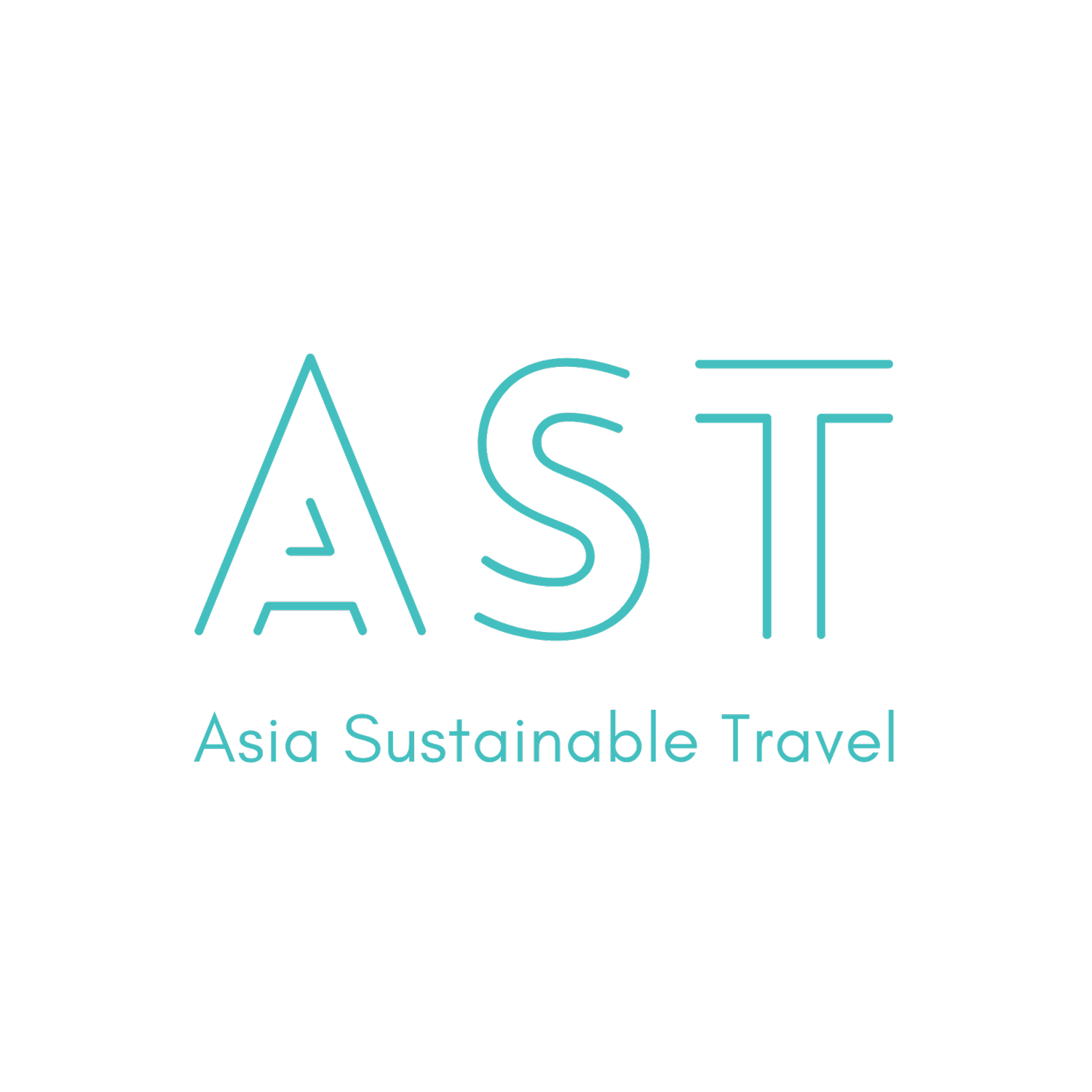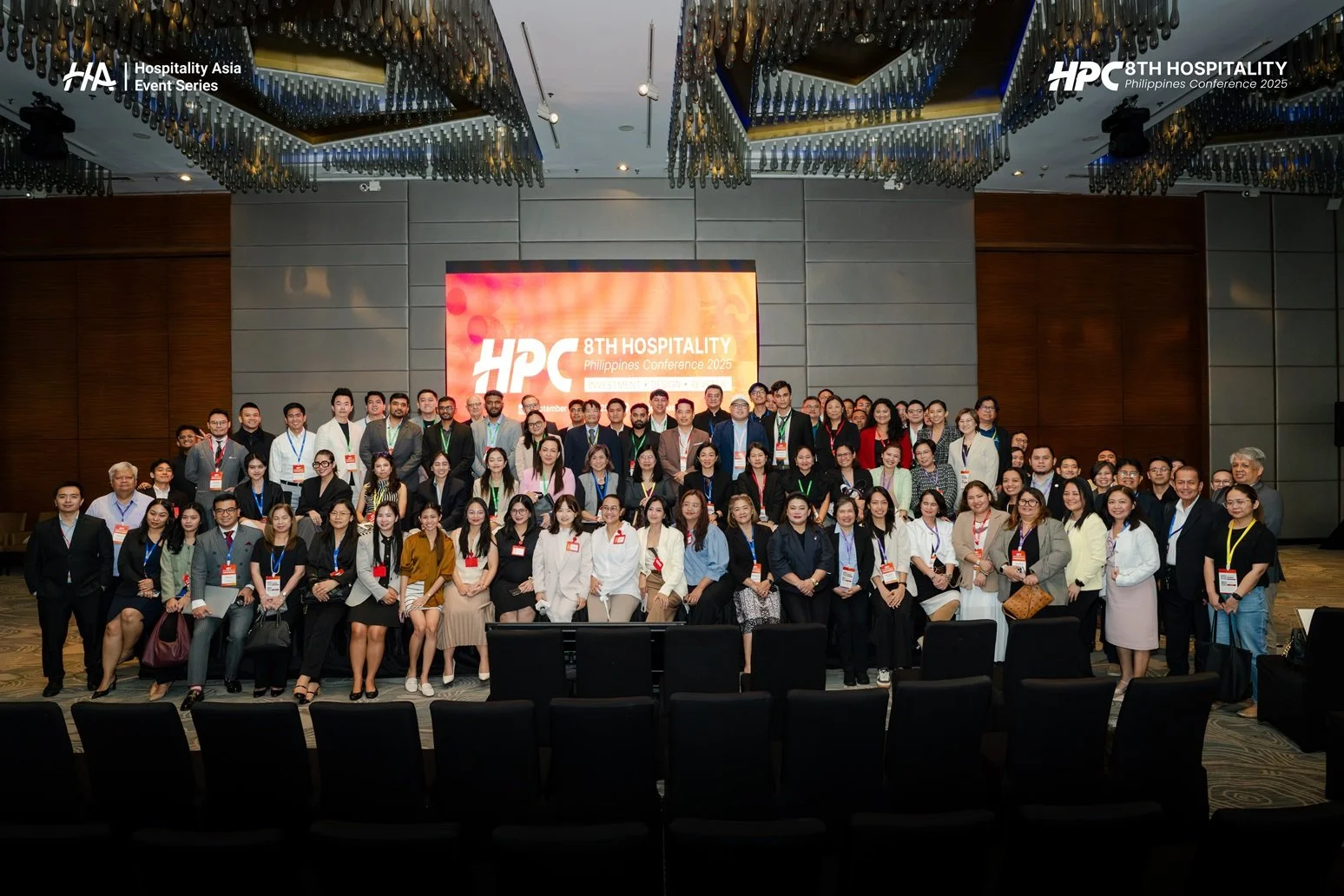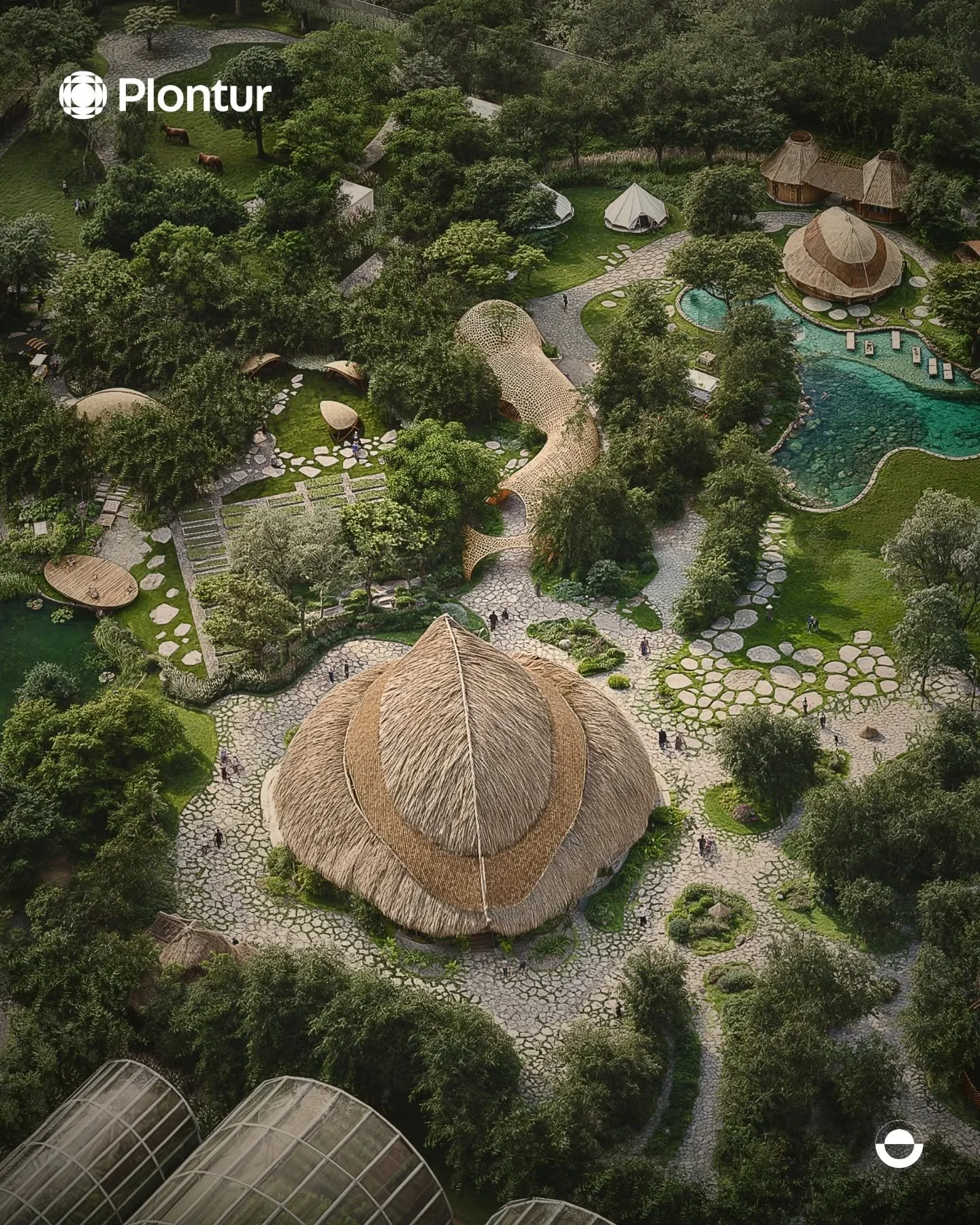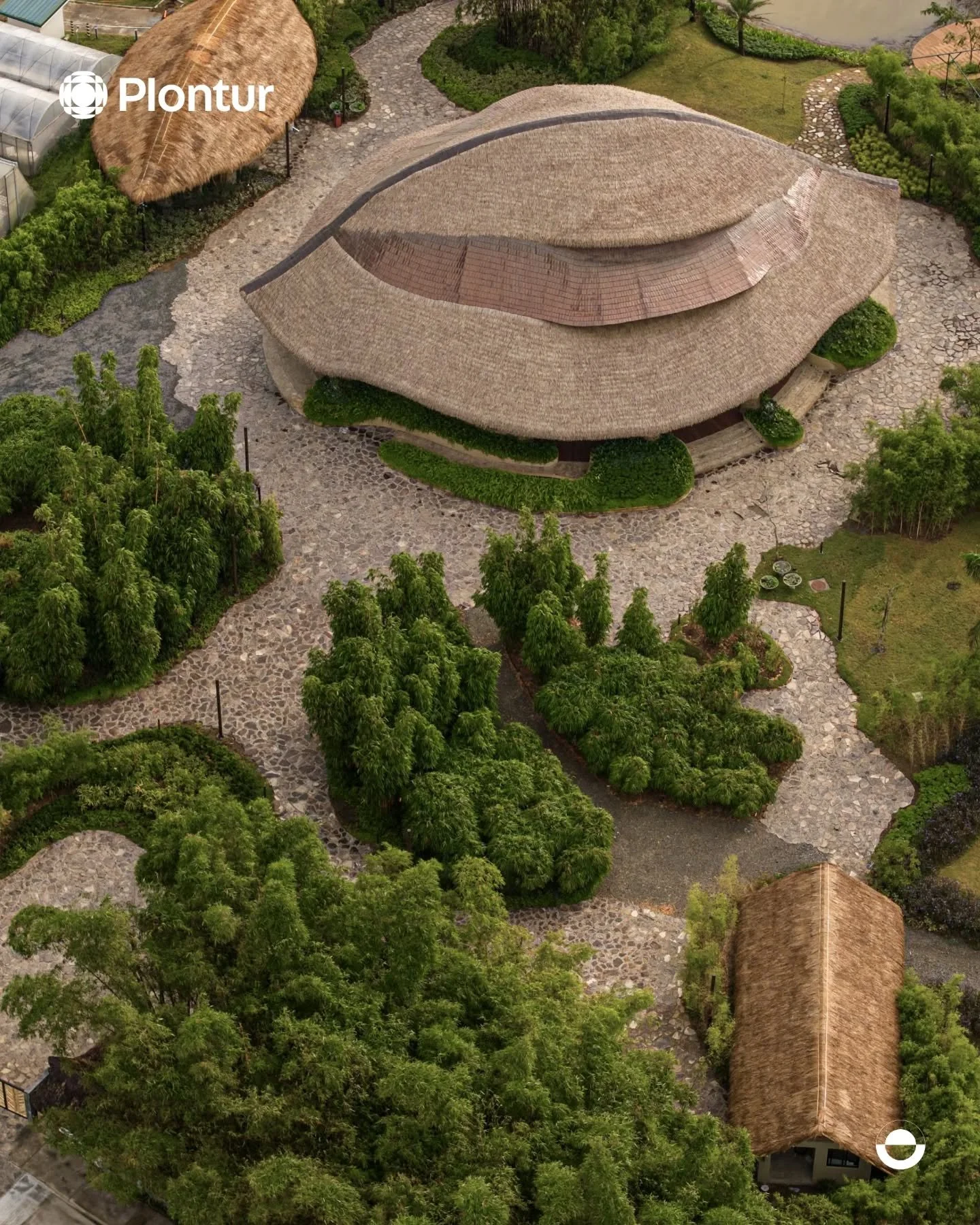Designing Tomorrow’s Resorts: Sustainability, Immersion, and ROI at HPC2025
The 8th Hospitality Philippines Conference (HPC2025), held on September 17–18, 2025, in Manila, brought together over 400 hospitality and travel professionals to discuss the future of the industry. With three focused summits—Hotel Investment Summit Philippines (HISP), Hotel Design Summit Philippines (HDSP), and Hotel Revenue Summit Philippines (HRSP)—the event covered key aspects of the country’s hospitality sector.
The Hotel Design Summit, chaired by the author, explored innovative approaches to sustainability, immersive guest experiences, and design excellence. Featuring six panel discussions, the summit offered actionable insights for property developers, hotel operators, architects, and designers.
This article summarizes the key takeaways from the Hotel Design Summit, providing practical strategies for hospitality professionals to reimagine their properties with a focus on sustainability, innovation, and guest-centric design.
Sustainable by Design: Future-Proofing Resorts for Climate and Efficiency
From left: Felix Guggenheim (GCI-Hospitality, Inc.), Mikel Arriet (Anya Resort Tagaytay), Paolo Campillo (3AM Consultancy), William Ti Jr. (WTA Architecture and Design Studio), and Carlos Lorenzo Vega (First Gen Corporation)
How can resorts embrace sustainability without sacrificing luxury or guest experience? This was the challenge addressed by industry leaders during the panel "Sustainable by Design," moderated by Felix Guggenheim, President of GCI-Hospitality, Inc.
The discussion featured insights from Mikel Arriet (General Manager, Anya Resort Tagaytay), Paolo Campillo (Managing Director, 3AM Consultancy), William Ti Jr. (Principal Architect, WTA Architecture and Design Studio), and Carlos Lorenzo Vega (Chief Customer Engagement Officer, First Gen Corporation).
1. Embed sustainability early—48 months ahead.
Campillo emphasized that sustainability decisions should be made during the planning phase. Delaying these choices results in costly retrofits and missed opportunities for efficiency.
Building orientation matters: Optimize building orientation to reduce core temperature, resulting in substantial energy cost savings over time. “You lower the core temperature one or two degrees—in your 10-year ROI, how many millions of savings is that? Once the cement’s been poured, I can’t move the building.”
Built-in renewable systems: Plan for renewables like solar panels and rainwater harvesting; retrofitting after construction is expensive and less effective.
Team collaboration: Developers should form a multidisciplinary team early, including consultants and energy experts—not just architects—to ensure sustainability is prioritized from the beginning.
2. Design with nature, not against it.
“Build with nature, not against it,” urged Guggenheim. Ti emphasized the preservation of natural landscapes and integrating them into the resort experience.
Preserve natural features: Keep parts of the site untouched to maintain its natural beauty and ecological balance.
Community connection: Integrate hotels and resorts into their local communities, avoiding the “walled-off” approach, so they become an integral part of the community rather than just a point of entry and exit.
Climate resilience: Choose native plants and embrace the natural topography to reduce maintenance and irrigation needs, which in turn enhances climate resilience.
Amara Resort by WTA Architecture and Design Studio
3. Take control of your energy sourcing.
Vega explained that energy efficiency begins with the source. Resorts can reduce costs and environmental impact by opting for renewable energy sources and monitoring their energy consumption.
Renewable energy: Initiatives like the Green Energy Option Program (GEOP) allow resorts to source power from renewable providers, reducing costs and carbon footprints. For remote resorts, consider investing in hybrid microgrids (solar, batteries, and diesel) for enhanced energy independence.
Energy monitoring: Install energy monitoring tools: “If you cannot monitor something, you cannot measure it, you won’t be able to manage it.”
Smart design: Plan for features like solar-ready rooftops and efficient Heating, Ventilation, and Air Conditioning (HVAC) systems during the design phase to maximize long-term savings.
4. Make sustainability a story guests can see and feel.
Arriet shared how Anya Resort Tagaytay combines sustainability with guest experience, proving that luxury and eco-consciousness can coexist.
Three R’s: Infuse “reduce, reuse, recycle” throughout the guest journey.
Local stories: Welcome guests with locally sourced drinks and use refillable amenities crafted from volcanic ashes to create memorable, eco-conscious experiences.
Staff training: Comprehensive training ensures sustainability is a daily practice, from energy monitoring to waste management.
Share the story and impact of these initiatives with travelers, turning eco-consciousness into elevated, memorable experiences.
Key Takeaway:
Sustainability is not a cost; it’s an investment in long-term success, benefiting all industry stakeholders. By planning ahead, working in harmony with nature, and prioritizing energy efficiency, resorts can lower expenses, enhance guest experiences, and build a lasting legacy of environmental responsibility.
Resort Reimagined: Designing Immersive and Sustainable Escapes
From left: Harvey Vasquez (Kalamaam Design Studio), Daniel Anderson (T1 Project Management Inc.), Felino “Jun” Palafox, Jr. (Palafox Associates), and Stuart Marshall (Stack Modular)
Moderated by Harvey Vasquez (Design Principal, Kalamaam Design Studio), this panel featured Stuart Marshall (Director of Global Sales, Stack Modular), Daniel Anderson (Chairman, T1 Project Management Inc.), and Felino “Jun” Palafox, Jr. (President and Founder, Palafox Associates) who shared strategies for balancing sustainability, cost, design, and authentic guest experiences.
1. Rethink modularity: bespoke, not cookie-cutter.
Marshall dispelled the outdated notion that modular means “one size fits all.” Modern modular construction provides tailor-made solutions and significant sustainability benefits.
Customized framework: Modular builds don’t need to follow shipping container restrictions. Their system utilizes bespoke steel frames, tailored to each project’s specific needs. “It's not a cookie-cutter. Every project is unique.”
Reduced on-site impact: Pre-finishing rooms in the factory reduces on-site activity by up to 50%, meaning fewer deliveries, less waste, and a smaller carbon footprint.
Faster ROI: Modular projects can be completed 30–40% faster than traditional builds. “The faster it's open, the faster you're making money from it.”
2. Design with macro and micro perspectives.
Palafox, renowned architect and urban planner, advocates for holistic thinking—connecting each resort to the broader environment and community.
Think bigger than the property line: “It's no longer location, location, location. It's mobility, mobility, mobility. Accessibility, accessibility, accessibility.” Palafox encouraged developers to consider broader infrastructure and convenient access.
Open spaces matter: Palafox advocated for exceeding legal open space requirements, noting that developments with more green space often see higher land values.
Kitchen Gardens: He encouraged resorts to adopt farm-to-table practices, reducing food miles and supporting local agriculture.
True value, not shortcuts: Removing energy-saving features like double-glazed windows to cut upfront costs often backfires. Life-cycle costs matter most.
3. Diversify your energy mix to reduce diesel dependence.
For island and remote resorts, Anderson explained that reducing reliance on diesel is both practical and sustainable.
Cut consumption first: Focus on key energy users like HVAC, water treatment, and laundry. The guestroom HVAC system alone can account for half the electricity load.
Adopt alternatives: Explore innovative solutions like seawater air conditioning (SWAC), which uses deep-sea water for cooling, and biogas from food waste to offset energy needs.
Scale up solar: Solar farms are increasingly viable. A one-hectare facility can produce about one megawatt—covering roughly half of a 100-villa resort’s needs—with a 7- to 8-year ROI.
Key Takeaway:
Modular building, holistic design, and a diversified energy mix are essential for sustainable, resilient, and profitable resorts in the Philippines. As Palafox put it, “We don’t just protect the environment; we enhance it.”
Luxury Meets Lifestyle: Integrating Brand and Retail
From left: John Ian Fulgar (Fulgar Architects), Toon Virochpoka (Design 103 International), and Phan Huu Duc (TUI Hotels & Resorts)
How can high-end retail enhance the luxury hotel guest experience? This question guided a panel discussion on integrating brand and retail to create lifestyle-oriented destinations.
Moderator John Ian Fulgar (Principal Architect, Fulgar Architects) led the conversation with Toon Virochpoka (Co-CEO, Design 103 International) and Phan Huu Duc (Regional Business Development Director, TUI Hotels & Resorts). They explored how merging hospitality with retail can diversify revenue, build brand loyalty, and create unforgettable guest journeys.
1. The three prerequisites of luxury
Virochpoka explained that every luxury hotel guest fundamentally seeks three things. Understanding these needs is the first step toward creating a successful lifestyle experience. He emphasized that these prerequisites are essential for modern hotel developments.
Healing: Guests crave connection with nature and sustainability-oriented designs to rest and rejuvenate.
Socializing: As social beings, guests draw energy from being around others and value spaces that encourage shared experiences.
Entertaining: A sense of awe and inspiration is crucial. Guests look for authenticity and unique selling points that make their stay memorable.
2. Augmenting hospitality with retail design
Virochpoka proposed using retail design principles to enhance the hotel experience. He categorized these into eight guidelines focused on consumers, environment, experiences, and technology, including creating dynamic entertainment hubs, incorporating vertical gardens to cool spaces, and using intelligent systems to monitor and optimize offerings.
Curated offerings: Provide retail selections that cater to specific guest tastes, with a heavy emphasis on food and beverage, and spaces for events.
Entertainment hubs: Incorporate venues for nighttime activities, such as beach clubs or concert halls, to keep guests engaged on-site and extend their stay.
Ambiance and attraction: Design visually appealing facades and interiors that cater to different needs at different times of the day, creating an inviting atmosphere.
3. Turning stays into lasting brand loyalty
Phan highlighted that brand-retail integration is a powerful strategy, not just a trend. By collaborating with lifestyle, fashion, wellness, or artisanal brands, hotels can transform into lifestyle destinations, extending the brand experience far beyond a guest's stay.
Revenue diversification: Retail generates new income streams as guests purchase products that remind them of their experience. Phan noted this can account for 3-5% of total revenue.
Enhanced guest experience: Integration personalizes the experience, enabling guests to purchase wellness products they used at the spa or local crafts they discovered, making the memory tangible.
Strategic partnerships: Collaborating with local or global brands enables hotels to tap into a shared audience and enhance brand perception, especially in the luxury segment.
Key Takeaway:
Successful brand-retail integration transforms a hotel from a place to stay into a lifestyle destination. Focusing on healing, socializing, and entertainment, and by strategically embedding retail, allows hotels to create deeper guest connections, drive new revenue, and build a brand that travels home with their guests.
Designing for the Soul: Wellness, Art & Cultural Expression
From left: The author, Rhea Vitto Tabora (Asia Sustainable Travel and Travel Asia Now), Catherine Turvill (Nurture Wellness Village Tagaytay and Wellness Tourism Association of the Philippines), Denise de Castro (DEQA Design Collaborative), and Ryan Kenneth Escobido (Lascaidas Resort)
In a world filled with chaos, travelers are increasingly seeking sanctuaries. The panel "Designing for the Soul" discussed how to create these spaces by blending wellness, art, and cultural expression.
The author led the discussion with Denise de Castro (Principal Architect, DEQA Design Collaborative), Catherine Turvill (President, Nurture Wellness Village Tagaytay and Wellness Tourism Association of the Philippines), and Ryan Kenneth Escobido (Resort Manager, Lascaidas Resort), who shared how soulful design, rooted in Filipino identity, can create transformative hospitality experiences.
1. Soulful design is designing with intention.
The panelists agreed that soulful design begins with a deep focus on the people who will use the space—guests, staff, and everyone who will visit and stay in the properties.
De Castro defined it as "designing with intention," creating places where people feel rested, connected, and in touch with their surroundings. This involves a holistic approach that connects the landscape to the property and integrates local culture.
Human-centric focus: The primary goal is to enhance the well-being of every person interacting with the property.
Connection to place: Use local materials, artisans, and craftspeople to create an authentic experience that speaks to the uniqueness of the location.
Stimulate the senses: A soulful design resonates with guests by engaging all five senses, from the sounds of nature to the taste of local cuisine.
2. Championing the Filipino Brand of Wellness
The discussion highlighted the unique potential of the Filipino Brand of Wellness, which is deeply rooted in culture and community. Turvill, a longtime advocate, explained that it’s a holistic experience that celebrates joy, care, and healing. This approach is built on the Filipino concept of kapwa, or shared identity, which makes the experience deeply relational and other-oriented.
Five senses experience: Incorporates handwoven textiles, healing music, local aromatherapy, and kitchen gardens with medicinal herbs.
The healing touch: Leverages the Filipino heritage of caregiving, where healing comes from the heart and intention, not just method.
Designing for togetherness: De Castro emphasized the importance of designing for Filipino relationships, where multigenerational travel is a common occurrence. She shared that they have renovated twin rooms into spaces for six to accommodate extended families, especially for properties that have a local market focus. This approach ensures everyone enjoys the property and provides spaces for both bonding and rest.
Photos by Nurture Wellness Village Tagaytay
3. Nature as a design partner
Escobido shared how Lascaidas Resort integrates soulful design by embracing its natural surroundings. The resort uses biophilic design and sustainable materials to create a serene environment that resonates with guests.
Nature’s soundscape: The sound of a nearby 30-foot waterfall, which flows from a rice field, creates a calming atmosphere, even though guests cannot swim in it.
Cultural elements: Features like kawa hot baths (a traditional Filipino wellness practice involving soaking in a large metal cauldron filled with warm water infused with herbs, flowers, or essential oils) and turmeric tea offer guests a uniquely Filipino wellness experience.
Sustainable materials: The resort incorporates bamboo, nipa huts, and other local materials to honor Filipino heritage and minimize environmental impact.
4. Sustainability through resourcefulness and community
Sustainability in soulful design is not about expensive technology but about resourcefulness and community integration. De Castro emphasized that "sustainability doesn't have to be expensive." It’s about making smart, conscious choices that respect both the environment and local economies.
Adaptive reuse: Renovating and reusing existing structures is a powerful, sustainable strategy that saves significant carbon emissions.
Passive strategies first: Prioritize natural daylight and ventilation before implementing active solutions like solar power.
Community as a partner: Turvill highlighted the importance of hiring from the local community, ensuring that the property’s success contributes to the local ecosystem and promotes respect for nature.
Key Takeaway:
Soulful design goes beyond aesthetics—it nurtures well-being and connection. Embracing the Filipino brand of wellness—rooted in care, community, and ingenuity—allows resorts to design authentic, sustainable sanctuaries that heal the soul and create lasting memories for every guest.
Facades that Speak: Architecture as Brand Identity
From left: Royce Nicdao (WTA Architecture and Design Studio), Timothy Wong (POLYGON), Prasasti Chenchin (SCSY Studio), and German Paulo de Mesa (Palafox)
A building's facade is the first chapter of its story. In hospitality, it shapes first impressions and communicates a brand's identity.
Moderated by Royce Nicdao (Director, WTA Architecture and Design Studio), this panel featured Timothy Wong (Design Director, POLYGON), German Paulo de Mesa (Partner and Director, Palafox), and Prasasti Chenchin (Director, SCSY Studio), who discussed how architecture translates brand narratives into physical forms.
1. Human-centered design and authenticity
Wong emphasized that great design begins with understanding the needs of the people who will interact with the space. This people-first approach focuses on creating meaningful connections by translating a brand’s unique story into the built environment. "Authenticity comes from intent," Timothy Wong explained. "A brand's story must be lived by the people behind it—it cannot be forced."
Understanding the audience: Design starts by identifying the needs of both the client and their customers.
Respecting the story: Preserving and revitalizing existing structures, as seen in The Henry Resort Dumaguete, breathes life into authentic storytelling.
Intent drives authenticity: A facade feels genuine when the brand's leaders, like the art-loving owners of The Henry, truly embody the values they wish to express.
The Henry Resort Dumaguete. Photo by the resort.
2. Designing across scales with a visionary outlook
De Mesa shared that Palafox operates on the principle that there are "no small projects." Their approach involves multi-phase planning—short-term, medium-term, long-term, and visionary (up to 100 years). This ensures that every project, regardless of its initial size, is designed as a catalyst for positive development within its community. Palafox adapts its style to fit the client's needs, whether it's an orphanage designed with a child-friendly palette or a corporate headquarters that balances dignity with modesty.
Multi-phase planning: Designing for future expansion allows small projects to evolve seamlessly into larger ones.
Visionary approach: Considering a location's future urbanization ensures that buildings remain relevant and integrated into their surroundings over time.
Adaptive style: The firm avoids a single distinct style, instead tailoring the architectural identity to the specific brand narrative and functional needs of each client.
3. Creating unique narratives for global brands
Chenchin explained that SCSY Studio brings a global perspective to each project, focusing on creating unique experiences that are deeply rooted in local culture and environment. Even when working with international brands that have established standards, the goal is to personalize the design. By drawing inspiration from local vernacular, natural landscapes, and cultural heritage, the architecture becomes a canvas for a unique story.
Personalized curation: Global brands are increasingly seeking designs tailored to the specific locality of the project.
Narrative-driven design: Each project is approached as a story, translating ideas from the local context into meaningful and enduring architecture.
Authentic experiences redefine luxury: Travelers now seek deeper cultural connections, making unique, locally inspired designs more valuable than standardized aesthetics.
Key Takeaway:
A facade is more than a building's exterior; it embodies a brand's identity and values. Successful hospitality architecture grows from a genuine, people-centered story, evolves with a long-term vision, and connects deeply to its local culture, creating spaces that resonate with guests.
Designing with Nature: Landscapes, Biophilia & Bamboo in Hospitality Spaces
Left photo (from left): Arch. Romolo V. Nati (Italpinas Development Corporation), Erick Yambao (Plontur), and Herbert Montevirgen (HKS Asia Pacific Design Consulting)
In modern luxury hospitality, nature has evolved from being a mere backdrop to becoming the centerpiece of the guest experience. The panel explored how landscapes, biophilia, and bamboo can transform hospitality spaces into immersive, sustainable sanctuaries that resonate deeply with guests.
Arch. Romolo V. Nati (CEO & Chairman, Italpinas Development Corporation) led the discussion, which featured insights from Herbert Montevirgen (Associate - Hospitality Planning Landscape, HKS Asia Pacific Design Consulting) and Erick Yambao (Founder and Principal Designer, Plontur).
1. Understanding nature-led design: biophilia, biomimicry and biocentricity
The panelists demystified the buzzwords driving nature-led design. Montevirgen explained that biomimicry learns from nature’s intelligence, biophilia fulfills our innate love for nature, and biocentric design elevates ecosystems to the same level as human needs. Yambao emphasized that reconnecting people with nature restores peace, contentment, and happiness.
Biomimicry: Drawing inspiration from nature’s designs, like windmill blades modeled after whale fins.
Biophilia: Designing spaces that engage the senses and cultivate a deep connection to nature.
Biocentric Design: Prioritizing ecosystems alongside human needs, creating harmony between development and the environment.
2. Nature as an Investment, Not an Expense
Convincing developers of landscaping’s ROI has long been a challenge. The panelists argued that nature should be treated as essential infrastructure, not an afterthought. Montevirgen described landscape as the "language of hospitality," shaping the guest experience in ways that are intangible but invaluable. Erick Yambao reframed the conversation around long-term brand legacy, noting that developers who prioritize nature create authentic, market-defining properties.
Yambao emphasized that prioritizing nature goes beyond marketing—it’s about intent. "If you're building a brand that you want to impact the next generation, or you want to leave a legacy to, then definitely you should prioritize nature," he explained. This means aligning resource and capital allocation with a commitment to preserving and enhancing natural features.
He elaborated, "Take a look at what trees you want to keep, the contour you want to preserve, the ecosystem that already exists, and the people that you want to impact. And you align everything there." Yambao added that the goal is not to take away from what’s beautiful but to frame and highlight it, ensuring that nature remains the centerpiece of the design.
Intangible ROI: Landscapes enhance guest experiences, driving loyalty, return visits, and word-of-mouth recommendations.
Brand differentiation: A nature-first approach sets properties apart in a competitive market and builds a legacy beyond short-term profits.
Nature as infrastructure: Preserving natural features like trees, topography, and ecosystems forms the foundation for meaningful and sustainable development.
Authenticity through intent: Developers must ask themselves whether they are using nature for marketing or to create real impact. The answer shapes the legacy they leave behind.
Kaway’an Ecopark by Plontur
3. Crafting the guest journey
The arrival sequence is the first opportunity to immerse guests in a property’s story. Montevirgen described it as a "prologue," a carefully curated journey from the gateway to the lobby that strips away the stress of travel.
The arrival sequence: Prolonging the journey from the entrance to the lobby allows storytelling to begin immediately. Montevirgen described weaving the road to create a "winding path" that immerses guests in the property’s narrative and natural surroundings from the moment they enter.
Never retrace your steps: A core rule of hospitality planning is to design paths that feel seamless, unique, and uninterrupted. Montevirgen emphasized that paths should be "curated in such a way there’s no cross of experiences," meaning guests should never encounter overlapping or redundant routes. For instance, paths should be designed so that guests walking through a garden or bamboo grove don’t intersect with service routes or delivery areas, preserving the sense of immersion in nature. Each path should feel intentional, supporting a continuous narrative that enhances the overall guest experience.
Highlight the main feature: Position the property to frame and celebrate the most significant natural element of the site, such as a lake or beach. Yambao referred to this as the "main actor of the show," around which the property and its social spaces should be oriented.
Key Takeaway:
Authentic hospitality design listens to the land. It moves beyond just adding greenery and instead integrates nature as a core part of its strategy. By creating a deep and meaningful connection to the environment, a property can offer a truly memorable experience that defines its brand and attracts repeat guests.
The author chaired the Hotel Design Summit. Left photo: Gloria Wong (Executive Director of Hospitality Asia Media) and Rhea Vitto Tabora (Co-Founder, Asia Sustainable Travel). All photos by Hospitality Asia Media.


























